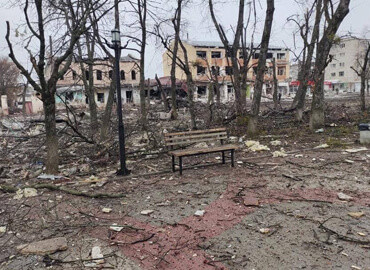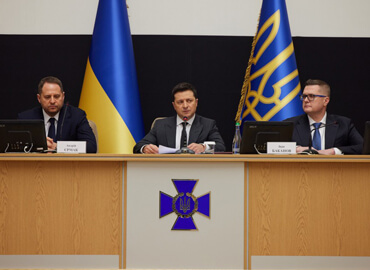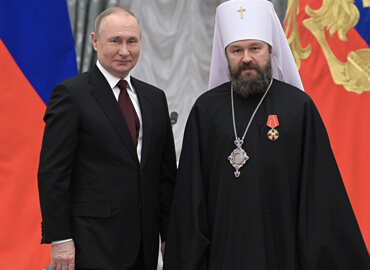The occasion is not the meeting itself between Biden and Putin, but the new stage that will begin after this meeting. Biden met as planned with all those involved in shaping the course towards Russia, Central and Eastern Europe, and the «eastern flank.» A new Atlantic Charter was signed in London, the NATO summit adopted a communiqué that is very tough on the Kremlin. The issues of global threats were discussed both at the G7 and with the leadership of the European Union.
Biden will report back to Putin on the outcome of these discussions. Putin, of course, has his own package of proposals, about which Lavrov will be able to say for a long time that «we proposed [cooperation], but our partners did not understand us.» These offers of cooperation are, of course, a formality because trust has been completely eroded.
Putin faces the fact of the NATO communiqué that clearly marks the end of the seven-year period that began in 2014 with Russian aggression against Ukraine. It also opens a new phase.
There are 4 main issues outlined in the communiqué:
1) Georgia will join NATO
2) Ukraine will join NATO; the door is open and the process has been approved
3) Article 5 will now be invoked in response to hybrid attacks; i.e., NATO and individual countries of the alliance can now view such actions as aggression and respond to them as with acts of aggression
4) Missile defense in Europe will now be deployed without regard to Russia’s position
At this the new stage, three possible scenarios for the Kremlin’s reaction can be anticipated
Scenario A. Inertia. Putin will withdraw, self-isolate and will continue to portray a war with the West for the Russian people but will not go further towards radical escalation.
Scenario B. Radical. The Kremlin over the next two or three years, with continuous escalation, will take some radical step. For example, the annexation of unrecognized «republics» or an attack on fiber-optic cables at the bottom of the Atlantic. What exactly will happen does not matter, but it will require a radical reaction from the West.
Scenario C. Putin will move towards de-escalation and will modify the concept of «national interests» that has already started to completely contradict Russia’s national interests.
It does not matter which scenario is more realistic. Those who care about the fate of Central and Eastern Europe and the entire European world should be prepared for any of them and develop a thoughtful program of action and an assessment of the risks of further escalation of the situation.
The Kremlin is not able now to back down or to give guarantees of its intention to follow a path of de-escalation. Ahead of us is a period of anti-Western hysteria, militarism in Russia, and further conflict between the Kremlin and the European Union and individual countries.
The Ukrainian leadership perceives what is happening as a victory for its diplomacy. For the countries of Central Europe, this communiqué marks a new stage in strengthening the «eastern flank.» Ukraine, Georgia, and Moldova will receive enormous support in the field of reforms.
The situation in Belarus is much more dramatic. If Alexander Lukashenko had transferred power to a successor during or after the elections, Belarus would have retained the possibility of maintaining the position as an open door between the Kremlin and the countries of the «eastern flank.» This is no longer the case. Belarusians became hostages of Lukashenko’s desire to retain power at any cost, the price for which is high. Lukashenko has traded his irredeemable gold guilder of sovereignty for Putin’s copper kopeck.
Lukashenko’s Belarus is losing the ability to maneuver and maintain neutrality, turning into Moscow’s «western flank.»
It should be emphasized that for Belarusians this is not their war. The post-Soviet development of Belarusian society was not aimed at breaking with Russia. But it also did not suggest that Belarusians would have to join the Kremlin’s geopolitical neurosis and become part of a deliberately losing strategy aimed at isolation from the world.
Belarusians have never subscribed to the concept of the «Russian world,» «special civilization» or the whole set of ideas on the metaphysical centuries-old conflict with the West on which the Kremlin now relies.
Now Belarusian independence, freedom, and dignity fly under the white-red-white flag. It has become a symbol not only of the fight against Lukashenko, but already at European demonstrations and around the world is read as a symbol of the fight against outdated dictatorships.
Therefore, after Biden’s meeting with Putin at this new stage, everything that has been developed by the U.S., the European Union, and NATO for the next decade must maintain a large-scale line of support for everything that comes under the banner of the white-red-white. Because it is under this flag now that, regardless of any Kremlin strategy, will remain the voice of the Belarusians who do not want to close the bunker door with Putin and sit in it together with the crazy people betting on a conflict with Europe.
Материал доступен на русском языке: После Байдена











